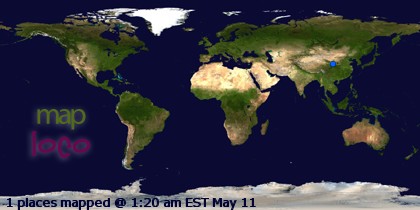It's the first day of spring semester classes, a misnomer because we are obviously deep in the grasp of old man winter.
But I'm surprisingly happy about it, considering how exhausted I was by the end of the fall semester.
I went to bed early, anticipating a very much more stressful day than any we've for the last three weeks. But I woke early, around 3am, and within minutes my mind was happily running through the sequence of Socratic questions I plan to use to get my 8am Environmental Sustainability class into the swing of things.
I guess I must like my job, if my head still does it at 3am when lying in bed.
Tottering outside with Haggis the sheepdog, for him to piddle, we noticed the skies are clear and bright, and the air is so still the crunch of our steps on snow in the dooryard echoes off the buildings and trees.
It's supposed to be this way all week. Good. That means we have passed through the first stage of a Maine winter, and into the second.
The first stage, which really begins in late November with the dropping temperatures, is a series of increasingly snowier nor 'easter storms. They come over every week or two, starting as rain, but with colder and colder air to our north, the storms themselves eventually get colder and snowier, until we have a deep blanket of snow on the ground and all the water that doesn't run is frozen pretty well.
The second stage is when this stable, cold Canadian air mass, which brings very cold nights, but bright and sunny days, comes down to meet us. The storm track gets pushed to our south.
Because the northern hemisphere is beginning its six-month tilt back towards the sun, the days are getting longer too, although they're not "racing" yet. That will come in a month or so.
The combination of cold, clear air and longer days means that we get a lot of very bright, beautiful weather in January and February in Maine. And by the early afternoon it can be pleasant outside, even warm enough to shed a layer. As long as you keep that layer handy for when the sun drops below the treeline.
We still get nor'easters, but they're less frequent. Eventually, in April, or if we're lucky late March, the storms bring rain again, which washes the snow away. By then the night-time temperatures are up, so we plan lambing around here for later March-early April. The key to successful lambing in Maine is not to have ewes drop their babies in the middle of a ten-below F night in the middle of a snowbank. The lambs are born wet and their coat doesn't keep the cold out if it doesn't get chance to dry off.
We like our lambs born onto a nice dry pile of bedding, in a nice warm barn, at temperatures above 20 F or better. That doesn't regularly happen again around here until late March.
Monday, January 11, 2010
Subscribe to:
Post Comments (Atom)


No comments:
Post a Comment
Welcome to our Farm Blog.
The purpose of this blog is for Aimee and I to communicate with friends and family, with those of our students, and other folks in general who are interested in homesteading and farming activities.
The earliest posts, at the very end of the blog, tell the story of the Great Farm, our purchase of a fragment of that farm, the renovation of the homestead and its populating with people and animals. Go all the way to the last post in the archive and read backwards from there to get it in chronological order.
After getting tired of spam comments (up to a dozen or more per day), I required commentators to be Google "registered users". You can write me at mwomersley@unity.edu if you have a serious comment or question and are not a registered user.
Spammers -- don't bother writing -- there's no way I will post your spam to my blog. Just go away.